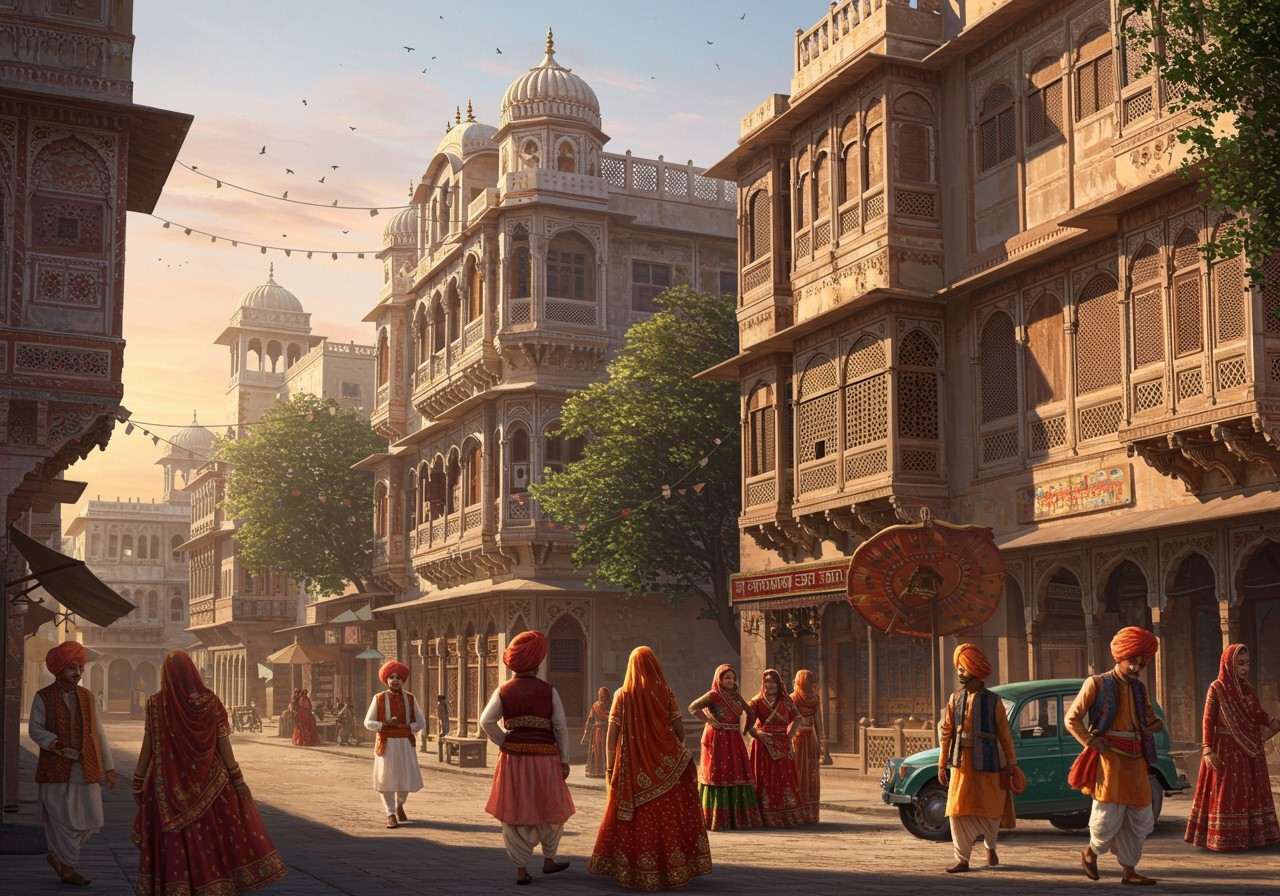
Step into Sikar, and you’ll feel it—a city in the heart of Rajasthan’s Shekhawati region that breathes history. Its havelis tell tales of glorious pasts, but listen closely, and you’ll hear whispers of a different time too. A time when the British Raj cast its shadow and influence across India, and Sikar was no exception. This wasn’t just a period of political change; it was an era that subtly wove new threads into the city’s rich cultural tapestry, creating a unique blend that we see even today.

When Two Worlds Met: The British Footprint in Sikar
The story of British influence in Sikar isn’t one of conflict alone, but of complex relationships. During the 19th century, through treaties and alliances, Sikar became part of the larger British administrative framework. Rulers like the visionary Rao Raja Madhav Singh Bahadur maintained a cordial relationship with the British government. This partnership wasn’t just about politics; it was about progress. It was this collaboration that paved the way for modern marvels like the railway line from Jaipur to Sikar, the introduction of electricity, and the construction of new roads that connected the city like never before.
Bricks and Mortar with a Tale to Tell: Sikar’s Architectural Legacy
Walk through Sikar, and you’ll notice the beautiful architectural fusion. The grand administrative buildings and some parts of the Sikar Fort showcase a style known as Indo-Saracenic, where traditional Rajasthani designs met British Gothic elements. It was a visual dialogue between two very different worlds. This era didn’t just build offices; it influenced urban planning, creating a city that was both ancient and modern. This timeless aesthetic continues to inspire us, reminding us of the beauty in blending styles, much like our exquisite collection of home decoratives that bring a touch of heritage into your home.
A Shift in Society: Economic and Cultural Ripples
The British era brought significant changes to Sikar’s economy. New agricultural practices were introduced, and trade routes flourished with the coming of the railway. While these changes brought prosperity, they also introduced new challenges like British taxation policies. On the social front, Western education began to take root, opening up new ways of thinking. Yet, through all this change, the people of Sikar held firmly to their roots. Cultural exchanges were common, but the core of our traditions, our rituals, and our faith remained unshaken. People found solace and strength in their heritage, often documented in sacred holy books that passed wisdom through generations.
Keeping Traditions Alive with Poojn.in
Sikar’s history teaches us the importance of embracing the new while honouring the old. At Poojn.in, we are dedicated to helping you keep these sacred traditions alive. We understand that while times change, the essence of our puja and rituals is timeless. For every ceremony, every festival, and every moment of devotion, we provide authentic and pure items, delivered right to your doorstep.
- Authentic Pooja Samagri: From fragrant incense sticks to pure ghee for your diyas, our vast collection of Pooja Samagri ensures your rituals are performed with utmost sanctity. We bring you everything you need to create a divine atmosphere in your home.
- Beautiful Idols and Attire: Adorn your deities with our stunning collection of attire and jewellery. Our beautiful Bhagwan ka Sringar items are crafted with love and devotion, helping you express your faith in the most beautiful way.
Explore our complete range at poojn.in and let us be a part of your spiritual journey. After all, preserving our culture is the greatest tribute to our history.
Understanding Sikar’s Past: Your Questions Answered
What was the real impact of the British on Sikar’s development?
The British era was a period of significant infrastructural development for Sikar. The introduction of railways and well-planned roads was a game-changer, turning the city into a crucial trade hub. This not only boosted the economy but also connected Sikar to the rest of India, fostering growth and new opportunities for its people.
How did local culture blend with British influences?
The cultural exchange was quite fascinating. While Western education and administrative systems were adopted, Sikar’s vibrant local traditions, festivals, and rituals continued to thrive. It was a fusion where new ideas were absorbed without compromising the age-old cultural identity, creating a unique social fabric that makes Sikar special.
What happened to Sikar after India’s independence?
After India gained independence from British rule in 1947, a new chapter began. The princely states were integrated into the newly formed nation. Sikar, along with other chiefships, became an integral part of the state of Rajasthan, continuing its journey as a city proud of its rich and layered heritage.
Can we still see British-era structures in Sikar today?
Absolutely! Many buildings and monuments from that time still stand tall, serving as proud reminders of Sikar’s historical journey. These structures, with their distinct blend of architectural styles, are a key part of the city’s heritage tourism, attracting history lovers from all over.


